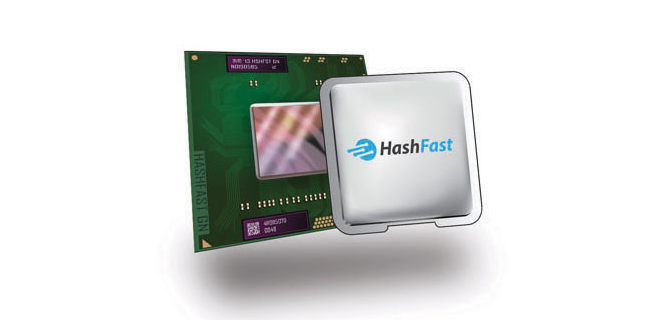HashFast co-founder Simon Barber may have been way ahead of the game when he sought investments for an ASIC chip to mine Bitcoins back in 2011. Investors weren’t biting two years ago.
With Bitcoin’s meteoric rise during 2013, investors were much more interested in Barber’s idea.
In September, his company HashFast taped out its Golden Nonce ASIC chip, and chip fabrication wrapped up in November.
That chip will power the company’s desktop Bitcoin miners, which are guaranteed to have shipped by the end of March 2014.
Two models are for sell now: The Baby Jet 400 GH/s machine costs $2,250, and the Sierra 1200 GH/s machine costs $6,300.
The GN chips performs at 400 GH per second, and the Sierra features three GN chips. Each chip is 28 nm and operates at less than 0.65 W per GH/sec.
Barber’s initial idea in 2011 envisioned a 65 nm chip. When Bitcoin prices rose in the early part of 2013, he was able to raise around $700,000 to produce his chip.
In July, HashFast partnered with Uniquify, a California company that designs silicon-on-chip components, and they decided to use TSMC to make the chips.
HashFast’s Miner Protection Program
The company is backing up its product with an enticing guarantee, too. Anyone who buys a Baby Jet from the first batch of production is protected against hashrate increases on the Bitcoin network by free backup ASICs.
Here’s how this works: If the network’s hashrate increases so much that the Baby Jet’s Bitcoin mining doesn’t pay for itself within 90 days, the company will send customers extra chips, increasing their mining capacity to up to 2 Terahashes.
What makes this guarantee even more enticing is HashFast calculates returns on investment in BTC only. So, say Bitcoins double in value against the US dollar after you purchase a Baby Jet, but the mining operations themselves underperform strictly in terms of Bitcoins mined.
Even though you have made twice what you expected to make in dollars, if the number of Bitcoins mined after 90 days is not equal to the value of Bitcoins you paid for the machine, they will send you another ASIC chip.
Here is what the program’s FAQ reads:
“The entire MPP program is based on BTC, which is a key reason we sell our machines for BTC. The increase in BTC-to-USD exchange rates may mean that you achieve fantastic ROI, even though your Baby Jet doesn’t generate the amount of Bitcoin you paid for it. We ignore that in our MPP calculations, and will give you additional hashing capacity even though you achieved ROI on a USD basis.”
